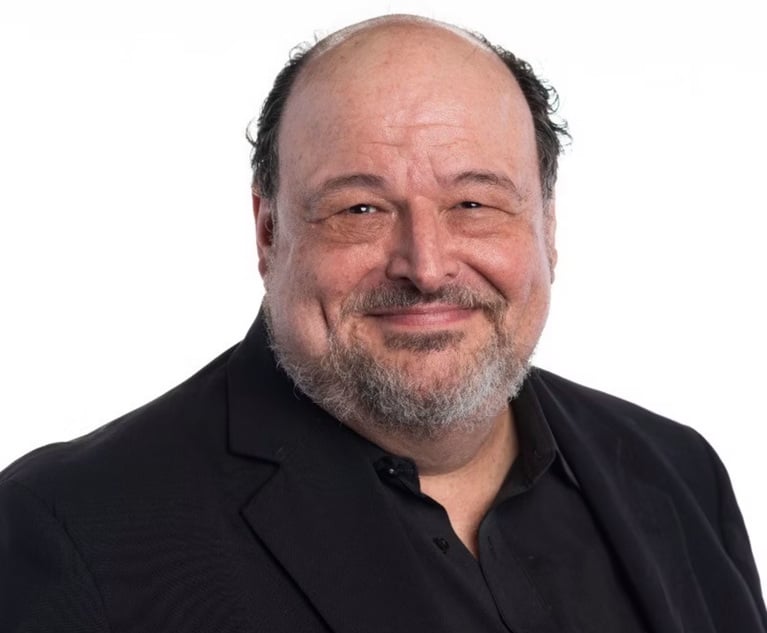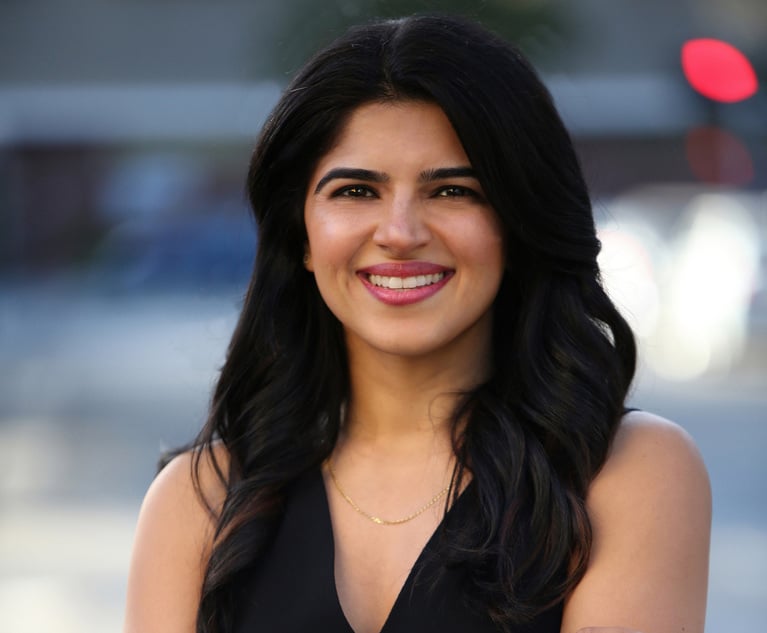Joe Brennan combines many interests as GC of The Field Museum
A love of law, technology and evolutionary biology equipped Brennan for the role
February 25, 2013 at 07:00 PM
6 minute read
As a child, Joe Brennan dreamed of becoming a marine biologist, but when a post-college stint as a paralegal at Mayer Brown instead convinced him to attend law school, it appeared that his love of science would remain a personal interest, not a professional calling. Little did he know that, more than a decade later, he would find a job that combined these two passions.
Upon graduating from law school, Brennan worked as a litigator, but he found the idea of in-house work more appealing. With only two years of legal experience under his belt, however, he found it difficult to make the transition to corporate law, so he bolstered his business knowledge by taking a job in the City of Chicago's contracts and commercial law division.
After about five years with the city, Brennan went in-house at a series of tech companies, eventually landing the general counsel spot at Deutsche Telekom subsidiary T-Systems North America, an experience that he likens to “standing on the back of a rampaging elephant and juggling.”
Then, in 2005, Brennan got an unexpected opportunity to combine his legal experience with his childhood love of biology when The Field Museum in Chicago—one of the largest natural history museums in the world—hired him as vice president and general counsel.
A few years ago, Brennan, who studied computer programming as a kid, found a way to use his tech expertise when he became the museum's chief information officer (CIO). In his dual capacity, he manages the Field's technological side—including its web, new media, social media and IT groups—as well as its legal department.
Q: How did you get the job at The Field Museum?
A: I really, fundamentally believed that I would not be considered for the job. So when I got the opportunity to interview with these guys who were lions of evolutionary biology … I used the opportunity to talk about their science and their perceptions about evolution, figuring that it would be my best and only chance to have any real conversation with these guys.
Correspondingly, the conversation was actually very interesting. So I think partially it was my diversity of experience, but it was also because I came in as a somewhat educated true believer.
Q: What was the transition from corporate to museum life like?
A: I always say there's a reason all my hair fell out. You don't know what you don't know until you have to answer questions about it.
I didn't know very much about cultural property. I didn't know much about Native American relations. I didn't know about importation or exportation of biological specimens. So I had to learn a lot very quickly.
Q: What are some of the most common legal issues you face?
A: We have a lot of cultural property issues, including litigation in federal district court about some Persian antiquities. We do an enormous amount of work with intellectual property. Because of our expansion into digital realms, we've put a lot of thought into data preservation, privacy and related issues, especially because we are dealing with children.
We build and rent exhibitions, and some of [them] come from overseas, so we have state, federal and international laws that we comply with to make sure that we transport things in the right way.
Any institution that has between 1.3 million and 1.5 million visitors a year is going to have a series of what you would think of as slip and falls—the basic kinds of things that come up when you have people coming through your building all the time.
Q: What kind of work are you doing with technology as the museum's CIO?
A: We've built a portal so that the public will be able to search our scientific collections and see all the things that we look at when we do our research. We have a grant from the Grainger Foundation that is going to allow us to image at least 500,000 of the most interesting things in our collection.
We want to get away from this behind-the-glass-wall, abstract, hands-off interaction with objects and really get to a different kind of personal interaction with these grand complexities.
Q: What is the most challenging part of your job?
A: Switching back and forth 15 times a day between being a lawyer and being the technology advocate. I constantly say to people it's a little bit like speaking English and then a foreign language, and switching back and forth throughout the course of the day. Not that I'm complaining—it's actually a wonderful challenge.
Q: What's the most rewarding part of your job?
A: Repatriation is the return of sacred objects to Native American and other indigenous cultures, and we've had some incredibly positive success in that area.
I also think we've begun to deliver on the promise that this place has always had by really improving the technological and digital architecture in this building.
Q: What's your advice to young lawyers who want to go in-house someday?
A: Diversity of experience. Going in-house is one thing, but if you're looking for that unusual kind of position, you should build the knowledge that qualifies you for the spot.
Q: What was your proudest moment as a lawyer?
A: Probably my first appointment as general counsel at T-Systems North America. I was thrilled to take on the leadership responsibility. I was incredibly enthusiastic about the company, and to be honest, I had no idea what I was getting into. But if I look back, that was a very happy time.
Q: If you weren't a lawyer, what would your dream job be?
A: I would probably become some sort of evolutionary biologist.
Q: What is your favorite exhibit at The Field Museum?
A: The evolution exhibit—meaning the dinosaurs and everything. It's really the story of life through the entire 4 billion years of Planet Earth.
This content has been archived. It is available through our partners, LexisNexis® and Bloomberg Law.
To view this content, please continue to their sites.
Not a Lexis Subscriber?
Subscribe Now
Not a Bloomberg Law Subscriber?
Subscribe Now
NOT FOR REPRINT
© 2024 ALM Global, LLC, All Rights Reserved. Request academic re-use from www.copyright.com. All other uses, submit a request to [email protected]. For more information visit Asset & Logo Licensing.
You Might Like
View All
'The Show Must Go On': Solo-GC-of-Year Kevin Colby Pulls Off Perpetual Juggling Act

Contract Software Unicorn Ironclad Hires Former Pinterest Lawyer as GC
2 minute read
How Amy Harris Leverages Diversity to Give UMB Financial a Competitive Edge
5 minute read
Auditor Finds 'Significant Deficiency' in FTC Accounting to Tune of $7M
4 minute readTrending Stories
Who Got The Work
Michael G. Bongiorno, Andrew Scott Dulberg and Elizabeth E. Driscoll from Wilmer Cutler Pickering Hale and Dorr have stepped in to represent Symbotic Inc., an A.I.-enabled technology platform that focuses on increasing supply chain efficiency, and other defendants in a pending shareholder derivative lawsuit. The case, filed Oct. 2 in Massachusetts District Court by the Brown Law Firm on behalf of Stephen Austen, accuses certain officers and directors of misleading investors in regard to Symbotic's potential for margin growth by failing to disclose that the company was not equipped to timely deploy its systems or manage expenses through project delays. The case, assigned to U.S. District Judge Nathaniel M. Gorton, is 1:24-cv-12522, Austen v. Cohen et al.
Who Got The Work
Edmund Polubinski and Marie Killmond of Davis Polk & Wardwell have entered appearances for data platform software development company MongoDB and other defendants in a pending shareholder derivative lawsuit. The action, filed Oct. 7 in New York Southern District Court by the Brown Law Firm, accuses the company's directors and/or officers of falsely expressing confidence in the company’s restructuring of its sales incentive plan and downplaying the severity of decreases in its upfront commitments. The case is 1:24-cv-07594, Roy v. Ittycheria et al.
Who Got The Work
Amy O. Bruchs and Kurt F. Ellison of Michael Best & Friedrich have entered appearances for Epic Systems Corp. in a pending employment discrimination lawsuit. The suit was filed Sept. 7 in Wisconsin Western District Court by Levine Eisberner LLC and Siri & Glimstad on behalf of a project manager who claims that he was wrongfully terminated after applying for a religious exemption to the defendant's COVID-19 vaccine mandate. The case, assigned to U.S. Magistrate Judge Anita Marie Boor, is 3:24-cv-00630, Secker, Nathan v. Epic Systems Corporation.
Who Got The Work
David X. Sullivan, Thomas J. Finn and Gregory A. Hall from McCarter & English have entered appearances for Sunrun Installation Services in a pending civil rights lawsuit. The complaint was filed Sept. 4 in Connecticut District Court by attorney Robert M. Berke on behalf of former employee George Edward Steins, who was arrested and charged with employing an unregistered home improvement salesperson. The complaint alleges that had Sunrun informed the Connecticut Department of Consumer Protection that the plaintiff's employment had ended in 2017 and that he no longer held Sunrun's home improvement contractor license, he would not have been hit with charges, which were dismissed in May 2024. The case, assigned to U.S. District Judge Jeffrey A. Meyer, is 3:24-cv-01423, Steins v. Sunrun, Inc. et al.
Who Got The Work
Greenberg Traurig shareholder Joshua L. Raskin has entered an appearance for boohoo.com UK Ltd. in a pending patent infringement lawsuit. The suit, filed Sept. 3 in Texas Eastern District Court by Rozier Hardt McDonough on behalf of Alto Dynamics, asserts five patents related to an online shopping platform. The case, assigned to U.S. District Judge Rodney Gilstrap, is 2:24-cv-00719, Alto Dynamics, LLC v. boohoo.com UK Limited.
Featured Firms
Law Offices of Gary Martin Hays & Associates, P.C.
(470) 294-1674
Law Offices of Mark E. Salomone
(857) 444-6468
Smith & Hassler
(713) 739-1250






